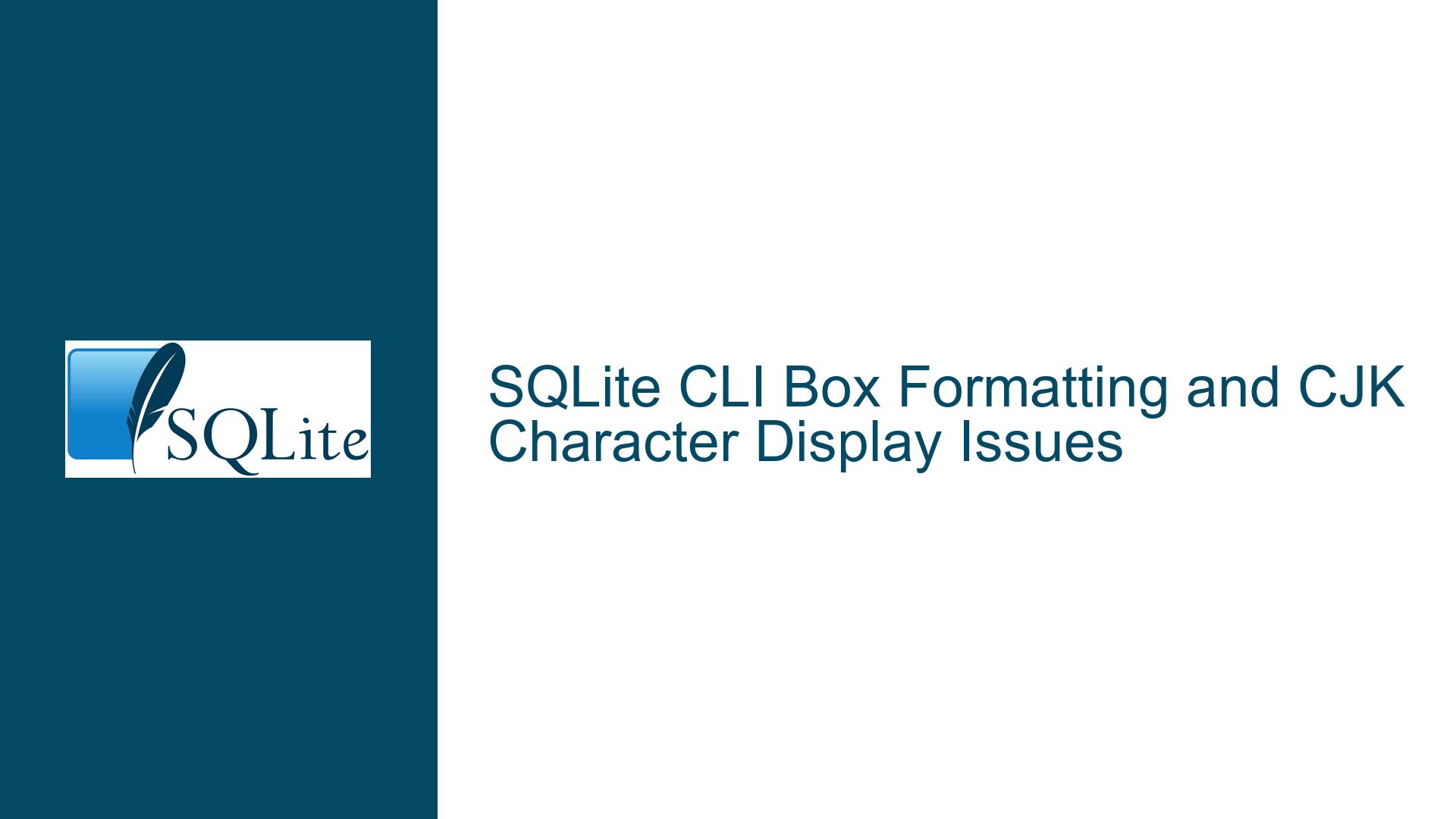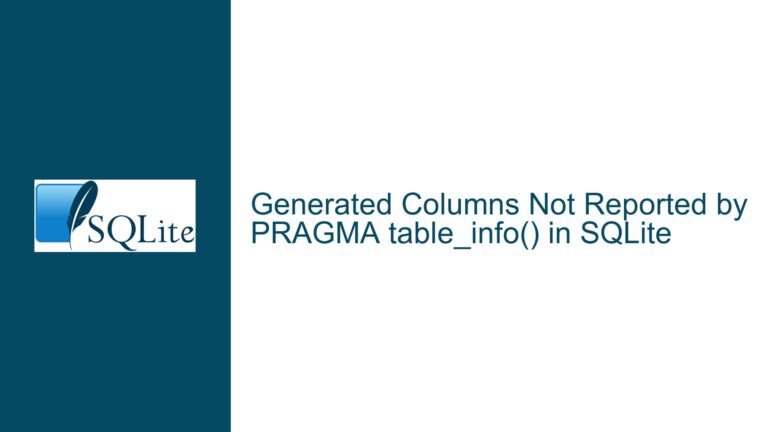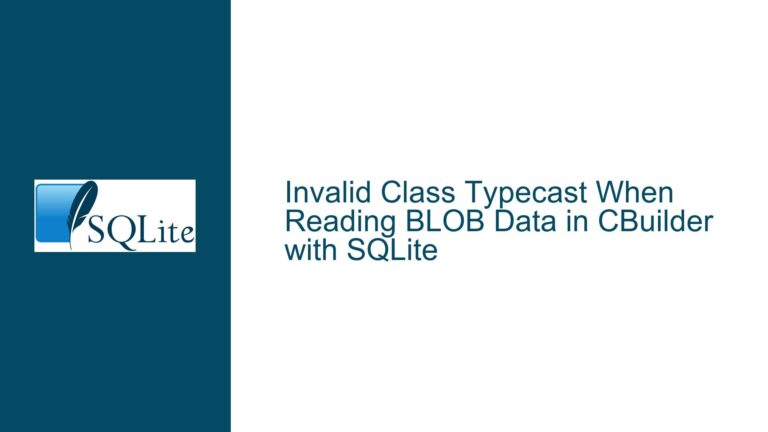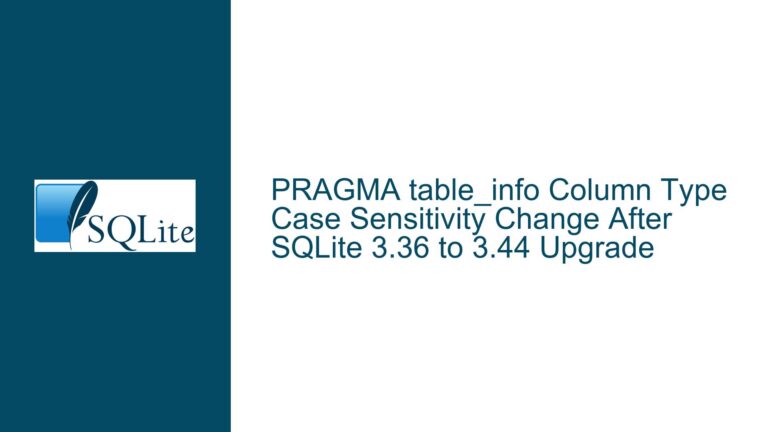SQLite CLI Box Formatting and CJK Character Display Issues
Issue Overview: Box Formatting Misalignment and CJK Character Handling in SQLite CLI
The SQLite Command Line Interface (CLI) is a powerful tool for interacting with SQLite databases, offering various output modes to display query results. One such mode is the .mode box format, which presents query results in a visually appealing box layout. However, users have reported issues with the formatting of these boxes, particularly when dealing with CJK (Chinese, Japanese, and Korean) characters. The problem manifests as misaligned boxes, making the output difficult to read and interpret.
The core of the issue lies in how SQLite CLI calculates column widths. By default, SQLite assumes that each character occupies a fixed number of bytes, which is generally true for ASCII characters. However, CJK characters are often represented using multiple bytes in UTF-8 encoding, and they also occupy more display space (typically two columns) compared to ASCII characters. This discrepancy leads to incorrect column width calculations, resulting in misaligned boxes.
Additionally, the SQLite documentation on the CLI does not explicitly address the handling of CJK characters, leaving users to infer the behavior based on their observations. This lack of clarity can lead to confusion, especially for users who are not familiar with the intricacies of character encoding and display width.
Possible Causes: UTF-8 Encoding and Column Width Calculation
The misalignment issue in SQLite CLI’s .mode box output can be attributed to several factors, primarily revolving around UTF-8 encoding and the way column widths are calculated.
UTF-8 Encoding and CJK Characters: UTF-8 is a variable-width character encoding that uses one to four bytes to represent each character. ASCII characters, which are the most common in English text, are represented using a single byte. However, CJK characters typically require three bytes in UTF-8 encoding. This difference in byte length is significant because SQLite CLI, by default, assumes that each character occupies a fixed number of bytes when calculating column widths. This assumption holds true for ASCII characters but fails for CJK characters, leading to incorrect width calculations.
Display Width of CJK Characters: In addition to the byte length, CJK characters also occupy more display space compared to ASCII characters. While an ASCII character typically occupies one column in a terminal or text display, a CJK character usually occupies two columns. This difference in display width further complicates the column width calculation in SQLite CLI, as the tool does not account for the additional space required by CJK characters.
Automatic Column Width Determination: SQLite CLI provides an option to automatically determine column widths based on the content of the columns. However, this feature does not take into account the display width of characters, especially for CJK characters. As a result, the automatic width determination can lead to misaligned boxes when CJK characters are present in the query results.
Documentation Gaps: The SQLite documentation does not explicitly mention the handling of CJK characters in the CLI, particularly in the context of the .mode box format. This lack of information can lead to confusion and frustration for users who encounter formatting issues when working with CJK characters.
Troubleshooting Steps, Solutions & Fixes: Addressing Box Formatting and CJK Character Handling
To resolve the box formatting misalignment and CJK character handling issues in SQLite CLI, several steps can be taken. These include adjusting column width settings, using external tools for better formatting, and modifying the SQLite CLI code to better handle CJK characters.
Adjusting Column Width Settings: One of the simplest ways to address the misalignment issue is to manually set the column widths in SQLite CLI. By specifying the width of each column, users can ensure that the boxes are properly aligned, even when CJK characters are present. This can be done using the .width command in SQLite CLI, followed by the desired width for each column. For example, if a table has three columns, the command .width 10 15 20 would set the widths of the first, second, and third columns to 10, 15, and 20 characters, respectively. This approach requires some trial and error to determine the appropriate widths, but it can be effective in achieving the desired formatting.
Using External Tools for Better Formatting: Another approach is to use external tools to format the query results after they have been retrieved from SQLite CLI. One such tool is the column command in Linux, which can be used to format text into columns with consistent widths. By piping the output of SQLite CLI to the column command, users can achieve better alignment of the boxes, even when CJK characters are present. For example, the command sqlite3 mydatabase.db "SELECT * FROM mytable;" | column -t would format the query results into neatly aligned columns. This approach leverages the capabilities of external tools to overcome the limitations of SQLite CLI’s built-in formatting options.
Modifying SQLite CLI Code: For users who are comfortable with programming and have access to the SQLite source code, another option is to modify the SQLite CLI code to better handle CJK characters. This could involve updating the column width calculation logic to account for the display width of characters, rather than just their byte length. For example, the code could be modified to use the wcwidth function, which is available in many programming languages and returns the display width of a character. By integrating this function into the SQLite CLI code, the tool could more accurately calculate column widths for CJK characters, leading to better alignment of the boxes.
Documentation Updates: To prevent confusion and frustration among users, the SQLite documentation should be updated to explicitly address the handling of CJK characters in the CLI, particularly in the context of the .mode box format. This could include a note explaining that CJK characters may require additional column width due to their display characteristics, and providing guidance on how to adjust column widths manually or use external tools for better formatting. Additionally, the documentation should clarify the behavior of the automatic column width determination feature, noting that it may not work as expected for CJK characters.
Testing and Validation: After implementing any of the above solutions, it is important to thoroughly test the changes to ensure that they resolve the formatting issues without introducing new problems. This could involve running a series of test queries with CJK characters and verifying that the boxes are properly aligned in the output. If the changes involve modifying the SQLite CLI code, it may also be necessary to test the modified version with a variety of databases and queries to ensure that it behaves as expected in different scenarios.
Community Feedback and Collaboration: Finally, it is important to engage with the SQLite community to gather feedback on the proposed solutions and collaborate on further improvements. This could involve posting the proposed changes on the SQLite forum or mailing list, and soliciting input from other users who may have encountered similar issues. By working together, the community can develop more robust solutions that address the formatting issues while maintaining the simplicity and efficiency of SQLite CLI.
In conclusion, the box formatting misalignment and CJK character handling issues in SQLite CLI can be addressed through a combination of manual adjustments, external tools, code modifications, and documentation updates. By taking a systematic approach to troubleshooting and implementing these solutions, users can achieve better formatting of query results, even when working with CJK characters.






